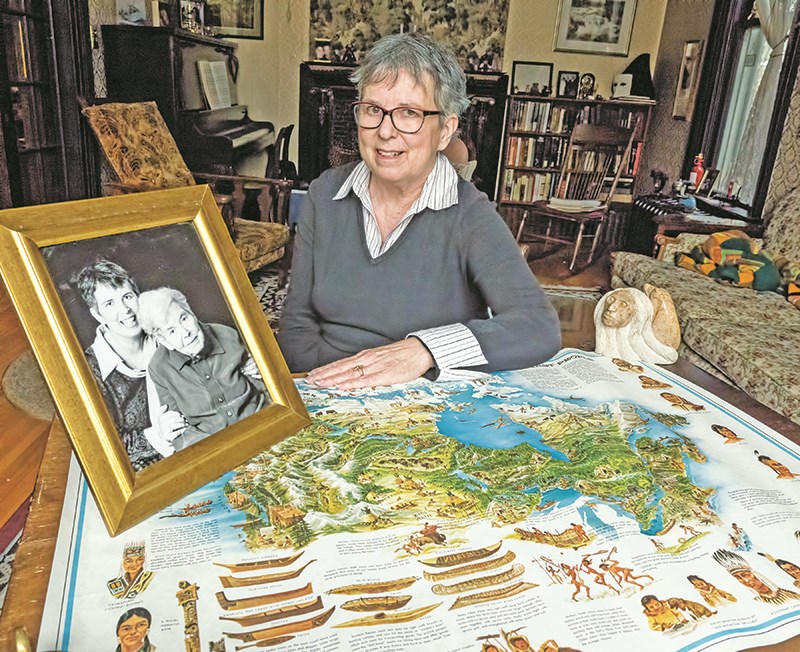Cathy Dobson
If you attended a Canadian elementary school in the 1960s and ‘70s, chances are you’ll remember a colourful map posted on the bulletin board featuring the nation’s indigenous people.
The beautifully detailed maps depicted how various groups of native people lived, hunted, built canoes and produced food prior to European arrival.
It was a meticulously drawn ode to First Nations, researched and illustrated by one of the few female Canadian illustrators of the day.
Her name was Doris Horwood and her work was especially dear to Sarnia’s Louise Meloney.
Horwood was Meloney’s mother. Growing up in Toronto, Meloney remembers rushing home after school to burst into her mom’s studio to see what she had drawn or painted that day.
“She was an incredible woman and ahead of her time,” said Meloney.
Horwood was a commercial artist in an era when Canada had very few female illustrators. But she was talented and creative enough to work in the field most of her life (1911 – 2003), although the boys in the lithographers union in Toronto made it clear they didn’t appreciate a woman’s presence at their functions. She was the only female in a membership of 6,000, according to her daughter.
Horwood was a graduate of the Banff School of Fine Arts and was quickly recruited by Associated Advertising Ltd. in Toronto where she illustrated countless advertisements, many of them readily recognizable today by folks of a certain age.
There were the multi-coloured three-dimensional ice cream cones that have been displayed for decades at most dairy shops. Meloney still has a cone in every colour.
But possibly the work Horwood valued above all was the map entitled “Canada’s First People.”
“It was my mom’s Centennial project and it took her 10 years to research and draw it,” said Meloney. “I remember how excited she was when the Prime Minister (Lester Pearson) wrote to thank her for doing it.”
As an only child, Meloney inherited stacks of her late mother’s work including multiple copies of the map, which was repeatedly reprinted and distributed to Canadian elementary schools.
Stored in Meloney’s heritage home in Sarnia are copies of the many paintings her mother did of canoes, indigenous people, their clothing and their homes. All were incorporated into the final 2-foot x 3-foot map.
The first were printed by Associated Advertising in 1964 but special copies were produced in 1967 with the Centennial seal on them.
“It’s really a historic document now,” said Meloney.
She has hopes of reprinting the Canada’s First People map one last time as a nod to her mother ,who died at the age of 91.
“Mom was always dedicated to improving the situation for native people,” she said. “I believe she did the map so that native students could see it and be proud of their background.”
